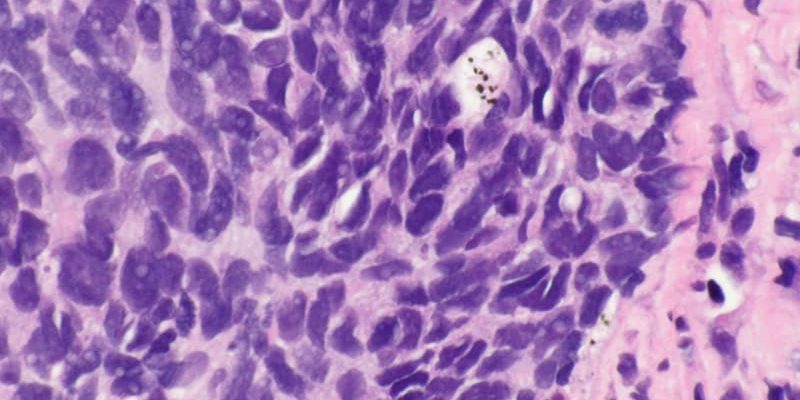SAN DIEGO — Oligometastatic non-small cell lung cancer (NSCLC) can be treated with consolidation radiotherapy, but determining which patients truly have oligometastatic disease and are most likely to benefit from radiation remains challenging.
New research presented at the American Society for Radiation Oncology annual meeting suggests that liquid biopsy testing prior to consolidation radiotherapy can identify patients with oligometastatic disease who may benefit from consolidation radiotherapy vs patients who likely have widespread micrometastatic disease and may benefit more from systemic therapy.
In the study, the researchers found that any level of residual circulating tumor DNA (ctDNA) detected before consolidation radiotherapy predicted worse progression-free survival (PFS) and overall survival.
“We have exciting real-world data that ctDNA detection and levels can risk-stratify oligometastatic NSCLC” and help determine which patients should be prioritized for consolidation radiotherapy vs systemic therapy, said Aadel Chaudhuri, MD, PhD, from the Siteman Cancer Center and Washington University School of Medicine in St. Louis, Missouri.
Chaudhuri presented the data in an oral abstract session and media briefing. The study was also published online in npj Precision Oncology to coincide with the meeting presentation.
Current strategies for guiding radiotherapy decision-making among patients with oligometastatic NSCLC remain somewhat limited. Tumor tissue biopsy only evaluates the tissue sample site while imaging may miss micrometastatic disease outside of the lesions observed on scans.
Being able to distinguish between “patients with truly oligometastatic disease from those with widespread micrometastatic disease could alter treatment approaches,” the investigators write. For instance, “patients with evidence of micrometastatic disease could be triaged to earlier systemic therapies” while patients with oligometastatic disease who do not have evidence of micrometastatic disease could receive local consolidative radiotherapy.
Chaudhuri and colleagues wanted to determine whether liquid biopsy findings could help distinguish disease severity in this patient population.
The team identified 309 patients with oligometastatic NSCLC who had ctDNA testing prior to radiotherapy. The researchers defined oligometastatic disease as metastatic disease in one to five organ systems. Overall, 74% of patients had detectable ctDNA before radiation, while the remaining 26% had no detectable ctDNA.
Compared with no ctDNA, any level of residual ctDNA detected prior to radiotherapy predicted worse PFS — 5.4 months for those with detectable ctDNA vs 8.8 months for those with no ctDNA detected (hazard ratio [HR] for progression, 1.57; P = .004).
Detectable ctDNA in plasma also predicted significantly worse median overall survival — 16.8 months for those with detectable ctDNA vs 25 months for patients with no ctDNA detected (HR, 1.65; P = .030).
When stratifying results by ctDNA variant allele frequency, the researchers also found that a maximum variant allele frequency level prior to radiotherapy predicted worse PFS (HR for progression, 3.78; P = .0253) and overall survival (HR, 5.42; P =.0061).
However, ctDNA levels did not correlate well with the number of metastatic organ systems, suggesting that imaging may be missing patients who may have only one system involved but who have elevated levels of ctDNA, Chaudhuri explained.
Rohann J.M. Correa, MD, PhD, the invited discussant at the media briefing, said that the results were “exciting.”
Although “this is preliminary,” the data are from patients in the real world. “This is what we’ve been looking for and waiting for in the oligometastatic disease space,” said Correa, from the London Health Sciences Center, Ontario, Canada.
The study was supported by NIH grants, Melanoma Research Alliance, Alvin Sitemen Foundation, V Foundation, Cancer Research Foundation, Children’s Discovery Institute, Children’s Tumor Foundation, Emerson Collective, and Rabushka Fund. Chaudhuri disclosed research support from Tempus Labs, maker of the ctDNA assay used in the study, and compensation from other companies. He is also a co-founder and board of directors’ member of LiquidCellDx. Correa reported no relevant disclosures.
American Society for Radiation Oncology (ASTRO) 2023 Annual Meeting: Abstract 149. Presented October 3, 2023.
npj Precision Oncology. Published online October 2, 2023. Full text
Neil Osterweil, an award-winning medical journalist, is a long-standing and frequent contributor to Medscape.
For more from Medscape Oncology, join us on X (formerly Twitter) and Facebook
Source: Read Full Article
